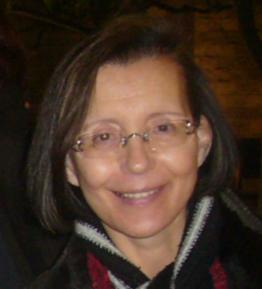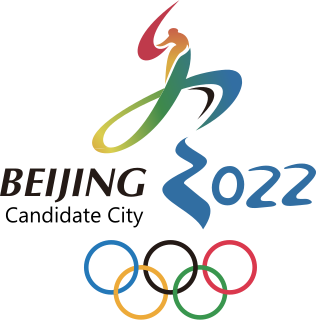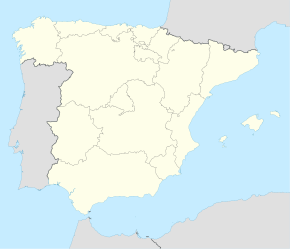
Catalonia is an autonomous community in the northeastern corner of Spain, designated as a nationality by its Statute of Autonomy.

La Seu d'Urgell is a town located in the Catalan Pyrenees in Spain. La Seu d'Urgell is also the capital of the comarca Alt Urgell, head of the judicial district of la Seu d'Urgell and the seat of Bishop of Urgell, one of the Andorra co-princes. It is in the district of Alt Pirineu i Aran, and is the town with the most inhabitants, having 17.4% of the district population. La Seu d'Urgell and Puigcerdà together have 30% of the population of the area.

The Province of Lleida is one of the four provinces of Catalonia. It lies in north-eastern Spain, in the western part of the autonomous community of Catalonia, and is bordered by the Provinces of Girona, Barcelona, Tarragona, Zaragoza and Huesca and the countries of France and Andorra. It is often popularly referred to as Ponent.
Jordi is the Catalan form of the ancient Greek name Georgios. Jordi is a popular name in Catalonia and is also given in the Netherlands and in Spanish, English and German speaking countries.

Montserrat Tura is a Spanish politician and Member of the Parliament of Catalonia. From 29 November 2006 to 29 December 2010, she had served as Minister of Justice of Catalonia. She is considered as one of the most prominent members of the Catalanist wing of the Socialists' Party of Catalonia. She is married with two daughters.

Palau Sant Jordi is an indoor sporting arena and multi-purpose installation that is part of the Olympic Ring complex located in Barcelona, Catalonia, Spain. Designed by the Japanese architect Arata Isozaki, it was opened in 1990. The maximum seating capacity of the arena is 17,960. It is the largest indoor arena in Spain.

Jordi Hereu i Boher is a politician, member of the PSC. He was the Mayor of Barcelona from 2006 to 2011. He is married, has two children and holds a MBA in business administration from the ESADE Business School.

Xavier Trias i Vidal de Llobatera is a Spanish politician, member of the Catalan European Democratic Party and was Mayor of Barcelona from July 2011 to June 2015. Among other responsibilities to the Government of Catalonia, he was Minister of Health and Director of the Presidency for various Jordi Pujol Governments.

Avinguda Diagonal is the name of one of Barcelona's broadest and most important avenues. It cuts the city in two, diagonally with respect to the grid pattern of the surrounding streets, hence the name.

Alt Pirineu i Aran is one of the seven vegueries (territories) defined by the Regional Plan of Catalonia. It is located in the Catalan High Pyrenees.

The Lleida–La Pobla Line is a 89.4-kilometre-long (55.6 mi) railway line linking Lleida and La Pobla de Segur, in Catalonia, Spain. Most of its users concentrate between Lleida and Balaguer, where a frequent service is offered, with few trains continuing to La Pobla de Segur. Since 2009, a heritage railway service branded Tren dels Llacs, in reference to the number of reservoirs skirted by the line north of Balaguer, has been running on the railway. The line is part of the ATM Àrea de Lleida fare-integrated public transport system between Lleida and Àger.

Lleida Pirineus is an important railway station serving the city of Lleida in Catalonia, Spain. It is located between the neighbourhoods of Pardinyes and Rambla de Ferran. The first train services in Lleida date of 1860, but the station wasn't built until 1927, and it did not adopt its current official name until 2003, when it underwent an ambitious reform. As a transport hub connecting the interior of Spain with the Corredor Mediterráneo, it serves both broad gauge and standard gauge trains, operated by both Adif-Renfe and Ferrocarrils de la Generalitat de Catalunya. It is the terminus of several regional railway services centered in Aragon and Catalonia. It's also one of the stations on the Madrid–Barcelona high-speed rail line, and it was its north-eastern terminus until 2008.

Rail transport in Catalonia operates on three rail gauges and services are operated by a variety of public operators:

Catalunya en Miniatura is miniature park inaugurated in 1983 in Torrelles de Llobregat, 17 km from Barcelona. The park is 60,000 square meters, 35,000 of them devoted to the scale models, it is one of the largest miniature parks in the world, and the largest of the 14 miniature building exhibitions present in Europe. It displays 147 models of palaces, churches, bridges and other buildings from Catalonia and Mallorca and it includes all the major works by the renowned architect Antoni Gaudí.
Barcelona, the capital of Catalonia, is the second largest city and metropolitan area in Spain and sixth-most populous urban area in the European Union. It has hosted many major international tournaments and has professional teams in different sports.

A total of six bids were initially submitted for the 2022 Winter Olympics. Four of the bids were subsequently withdrawn by 1 October 2014, citing either the high costs of hosting the Games or the lack of local support, leaving Almaty, Kazakhstan and Beijing, China as the only two remaining candidate cities. Beijing was then elected as the host city at the 128th IOC Session in Kuala Lumpur, Malaysia, on 31 July 2015.

Alt Pirineu Natural Park is the largest natural park in Catalonia, Spain. The park was established in 2003 by the Generalitat de Catalunya and covers an area of 69,850 hectares, including the highest peaks of the Pyrenees in Catalonia. It stretches over the comarques of Pallars Sobirà and Alt Urgell.
The following is a timeline of the history of the city of Barcelona, Catalonia, Spain.

The 2007 Barcelona City Council election, also the 2007 Barcelona municipal election, was held on Sunday, 27 May 2007, to elect the 8th City Council of the municipality of Barcelona. All 41 seats in the City Council were up for election. The election was held simultaneously with regional elections in thirteen autonomous communities and local elections all throughout Spain.

The 2011 Barcelona City Council election, also the 2011 Barcelona municipal election, was held on Sunday, 22 May 2011, to elect the 9th City Council of the municipality of Barcelona. All 41 seats in the City Council were up for election. The election was held simultaneously with regional elections in thirteen autonomous communities and local elections all throughout Spain.





















